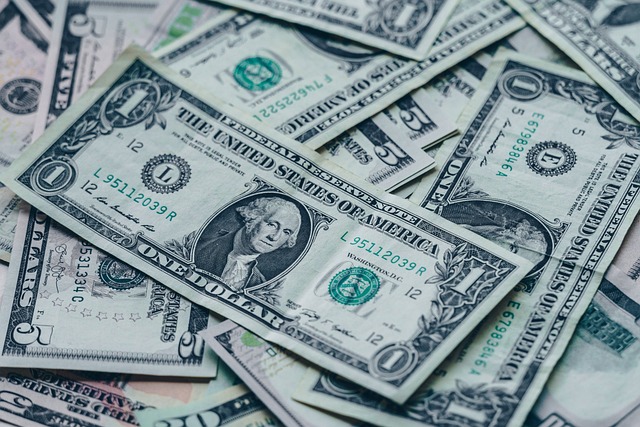The US Dollar (USD) stands as the most traded currency in the world. Its prominence in global trade and finance is unparalleled, influencing economies, markets, and political strategies across the globe. But what is it that makes the USD the currency of choice for governments, businesses, and investors?
This article explores the historical evolution, economic factors, and geopolitical influences that contribute to the USD’s position as the dominant currency in the world.
The Historical Evolution of the USD
The journey of the US Dollar to its status as the most traded currency began in the mid-20th century, largely due to historical events that reshaped the global financial system. One of the pivotal moments was the Bretton Woods Agreement of 1944, which set the stage for the USD to become the world’s reserve currency. The agreement, which came into effect after World War II, established a fixed exchange rate system where many currencies were pegged to the US Dollar, and the Dollar itself was tied to gold. This decision aimed to stabilize the global economy and promote international trade.
When the Bretton Woods system collapsed in 1971, under President Richard Nixon’s administration, the US severed the Dollar’s direct link to gold. Despite this shift, the USD retained its role as the global reserve currency, a position it continues to hold to this day. The trust placed in the US economy and its financial system ensured that even after the end of the gold standard, the Dollar remained the dominant global currency.
The rise of the US economy post-World War II also contributed significantly to the USD’s standing. As the United States emerged as the world’s largest economic power, its currency became synonymous with global stability. The power of the American economy, driven by industrial output, innovation, and political influence, made the USD a logical choice for international trade and financial transactions. Explore Saxo trading for further info.
The Role of the USD in Global Trade and Finance
The USD’s dominance in global trade is evident in the way it is used to price commodities. Oil, gold, and many other resources are traded in USD, making the Dollar essential for countries involved in these markets. This phenomenon is often referred to as the “petrodollar system,” where oil transactions are conducted in US Dollars, regardless of the buyer’s or seller’s country of origin. This system has entrenched the USD as the primary currency for global trade.
The USD’s role as the preferred currency for foreign exchange reserves cannot be overstated. Central banks around the world hold vast quantities of USD as part of their foreign exchange reserves, a reflection of the Dollar’s stability and liquidity. The International Monetary Fund (IMF) data consistently shows that over 60% of global reserves are held in US Dollars, far outpacing other currencies like the Euro or the Japanese Yen. This global preference for holding USD helps sustain its demand and, by extension, its value.
The Strength of the US Economy and Financial Markets
A crucial factor behind the USD’s dominance is the strength of the US economy. The United States boasts the largest GDP in the world, a reflection of its industrial, technological, and financial power. This economic prowess has bred global confidence in the US Dollar. When countries and investors need a reliable currency, the USD provides stability, driven by the size and strength of the US economy.
Additionally, the robust financial markets in the US play an essential role in supporting the USD’s global status. New York City is considered the financial capital of the world, with its financial markets, including the New York Stock Exchange, acting as hubs for global capital. Investors worldwide turn to US markets for their investment needs, and the USD plays a pivotal role in these transactions. The widespread use of USD in stock market listings, bonds, and other financial instruments ensures that the currency remains at the forefront of global finance.
The US Dollar’s Role in Forex Trading
In the world of forex trading, the US Dollar’s dominance is unmatched. The USD is involved in nearly 90% of all forex transactions, a testament to its liquidity and accessibility. Its status as the most traded currency pair is reflected in the high volume of trades involving the Dollar, such as the EUR/USD, GBP/USD, and USD/JPY pairs. The sheer volume of USD transactions ensures that it remains the cornerstone of the forex market, facilitating trade and investment around the globe.
The liquidity of the USD means that it is readily available for conversion into other currencies, making it the go-to choice for traders and investors seeking to move large sums of money across borders. The depth and accessibility of the US financial markets also play a role in the ease with which the USD can be traded. Whether an individual trader or a multinational corporation, the USD provides a stable and liquid vehicle for conducting international transactions.
Conclusion
The US Dollar’s dominance as the most traded currency in the world is no accident. It is the result of a unique combination of historical events, economic strength, financial market infrastructure, and geopolitical stability. The USD’s role in global trade, its use in foreign exchange reserves, and its function as a haven during times of uncertainty have all contributed to its unparalleled position. While new technologies and alternative currencies may emerge, the USD’s deep-rooted presence in the global financial system ensures that it will remain the world’s most traded currency for the foreseeable future.


